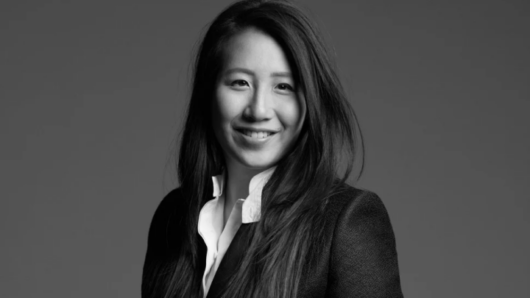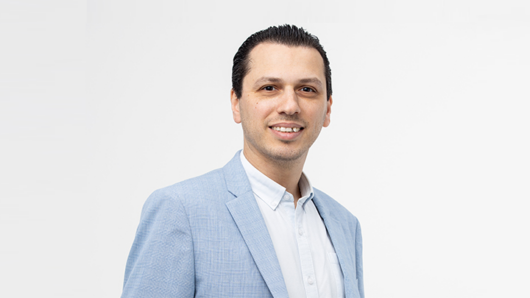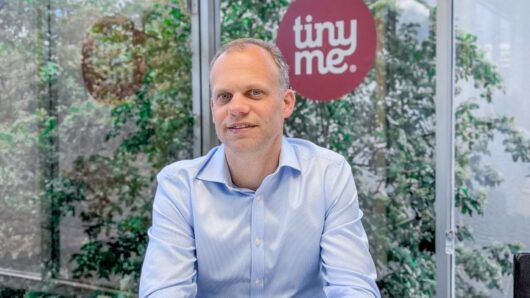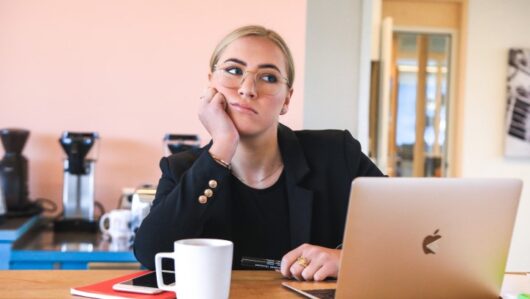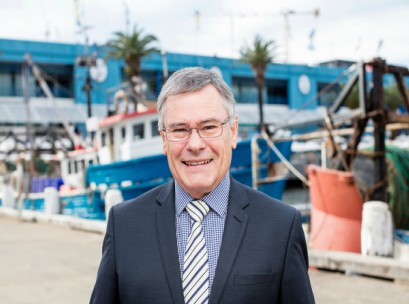 BIO: Bryan Skepper is the general manager of Sydney Fish Market, the largest seafood market in the Southern Hemisphere and one of Australia’s iconic tourism sites. Skepper has worked in the seafood industry for over 40 years, amassing a long list of accomplishments and is currently driving the realisation of SFM’s vision to build a new market. He is chairman of NSW Seafood Industry Council, a former director of the Australian Seafood Cooperative Research Centre and company secretary of Oceanwatch Australia. Skepper holds professional qualifications in accounting, human resource management and environmental auditing.
BIO: Bryan Skepper is the general manager of Sydney Fish Market, the largest seafood market in the Southern Hemisphere and one of Australia’s iconic tourism sites. Skepper has worked in the seafood industry for over 40 years, amassing a long list of accomplishments and is currently driving the realisation of SFM’s vision to build a new market. He is chairman of NSW Seafood Industry Council, a former director of the Australian Seafood Cooperative Research Centre and company secretary of Oceanwatch Australia. Skepper holds professional qualifications in accounting, human resource management and environmental auditing.
COMPANY PROFILE: Sydney Fish Market
A working fish market, Sydney Fish Market sources product both nationally and internationally and trades over 14,000 tonnes of seafood annually – with up to one hundred sustainable seafood species traded every day and approximately 500 species traded annually. SFM employs approximately 65 staff to organise the weekday wholesale auction, promote Sydney Fish Market as the centre of seafood excellence and operate the Sydney Seafood School.
Inside Retail Weekly: Tell us about what many people consider to be a cultural and retail institution.
Bryan Skepper: The Fish Market is a fairly unique organisation, in fact what we find is that it’s an experience rather than a shopping excursion and people come down because it’s very, very different to the normal shopping experience that people would normally get in a centre or a supermarket. It’s a genuine working fish market and I think that’s part of the secret of it.
When we started looking at development options – because this place is screaming out for an upgrade or reimagination – it became very apparent early on that if you broke up and separated the fleet or the wholesale activity from the retail activity, you would actually destroy the integrity of the authentic experience.
So the new development has been front and centre for us and trying to carry through and deliver a new facility that’s going to be safe and more enjoyable to be in so that people can stay for longer – without losing that hard to touch piece, the authentic experience, is one of the big challenges but it’s one of the exciting challenges about that project.
IRW: There’s been many attempts to redevelop the market over some time, what have been some of the challenges?
BS: In the past, where we’ve had a few attempts but not succeeded is because the site is so busy as it is, to do a development on the site and maintain activity at the same time was just too hard and created too many risks, including disruption for the existing tenants.
Even though we had support from the government last time, in terms of funding commitment, we weren’t able to get our shareholders to agree with us because of those risks.
The game changer though, was when Premier Baird announced a few years ago now, the Bay’s Precinct Urban Renewal Program. It meant that we could start thinking outside of the box. The site that we occupy now is owned by the NSW government so we have a lease from the Crown over the current site, but the land adjoining us and the area at the end of the bay next to us that links to Wentworth park, is also owned by the state government.
So it meant we could start looking at doing a development on an adjoining site whilst maintaining operations on the current site and then moving into the new facility – then the government has the release of the existing site to do another development on, which is part of the funding model.
So all of a sudden, what was very, very difficult to bring off, is still difficult, but you’ve got an opportunity to do it in a coordinated fashion that minimises disruption. We’re in partnership with the state government now whom will be the developer and so you’re ending up doing a development with a whole of government approach that has got a commercial aspect to it.
But it’s also got a social aspect to it, a public benefit aspect that I think is very, very important when you look at an institution like the Sydney Fish Market – it’s an organisation where people love our produce, the Australian seafood that we sell is absolutely fantastic.
Having the fishing fleet here, people love to see the fishing fleet tied up at the wharf and the fishermen mending their nets, guys pushing barrows of product around, forklifts; all of that hive and activity on a wholesale market, intermingled with a retail experience, provides a community involvement in the market.
I’ve been here since the mid-seventies and an analogy that I’ve used in meetings resonates. In the 1970s, the trading floor was out where the car park area is and in those days, it was essentially a wholesale market where the seafood got sent in and was sold at the auction but there was very little retail, there was only a couple of stalls here, there was not much retail at all. It was purely a wholesale market in those days.
In the 1980s, we did the current development in the building that we’re in now, which was previously owned by the Fairfax Group. It became a wholesale market with a few shops and that’s built over the years. And what I think the new market out over the water is going to be, is a customer and visitor experience, built on a wholesale market. So the wholesale market, the authenticity in that, creates the diversity of the marketplace for people to enjoy.
I think it’s important to understand that one of the unique aspects about this development – if you look down through history – towns, cities throughout the world always had a marketplace and people would come to the marketplace. In our case the fishermen would send their produce to the market to be sold to the traders, people, the locals would also come to buy produce.
The new market will be all of that, so it will be a local market place opening up the foreshore for the local consumers, customers to come and enjoy and also for the visitors to come and enjoy what we’ve got and so you’ve got a genuine marketplace that’s also available to the public to enjoy the experience of in a new environment out over the water – it gets me excited every time I think about it.
IRW: How would you say that Australians’ interest with food has developed over time and have the markets catered to that necessarily?
BS: It’s changed enormously, you’ve only got to look at the TV programs now to see all the cooking shows. Australia has become a very mature culture in food and it’s built on the diversity of our population.
So in seafood when I think back to the earlier days, you had Italians, on the catching side primarily, and you had the influx of the Greek communities in the cafes and the retailing. And as our population has become more diversified, we’re seeing a very strong Asian influence now and so you get [seafood] species that were previously not thought of as being food, now becoming highly valued and prized as part of our seafood culture and I’ve seen that build through the fish market over the years.
We get three million visitors a year coming through this site and 52 per cent of them are the locals, who come from within a 25km radius and without them you don’t have an authentic experience. 27 per cent of them are international tourists and the biggest chunk of them is out of Asia, in particular China. 15 per cent, which is about 450,000 people, are domestic day visitors and about 180,000 are domestic overnight visitors so there is a strong local tourism impact as well.
But what’s happened in more recent years, particularly out of China we’ve seen enormous growth. The data that came out from Tourism Australia not that long ago, looking at 2015/16 to 2016/17, Chinese inbound tourists to Australia grew by about 12 and half per cent in that period. Chinese inbounds to Sydney grew by about 8 per cent in that period while Chinese visitors to Sydney Fish Market grew by 15 per cent in that period.
We now get approximately 50 per cent of the Chinese tourists that come to Sydney, come to the Fish Market and that blows me away, every time I think about it. They’re coming here to enjoy our product, the species, the beautiful seafood we’ve got. We are really keen that the new market will be a place for the locals, first and foremost, because that is part of that authentic package that I was talking about.
IRW: Who would you consider as a main source of competition? Supermarkets or even international players like Aldi and Costco?
BS: I don’t really see the likes of Aldi and Costco as being competitors, probably because Sydney Fish Markets is a shopping experience destination rather than just being a shopping destination. It’s great people are buying their seafood from the supermarkets. If anything, Australians need to eat more seafood in their diet because it’s healthier, it’s the ultimate healthy food. But the supermarkets, by their nature, don’t have that big range of variety, they need regular supply. If you look at our offering, where we trade about $150 million a year worth of fresh seafood through our auction system, over a 12 month period, we have 500 different species that we sell on any one day, where we’ll have a 100 different species that are on offer for sale in terms of fish and crustaceans and molluscs and so on. And that’s quite unique and also reflected in the retail offer on the site here. So it’s an experience rather than a product, rather than just buying seafood.
But we’ve tried to make the site not just seafood, we’ve tried to make it a fresh food site so we’ve got a fantastic fruit and vegetable shop here, mixed meats and you’ve got Blackwattle Deli. It’s a place where you can come for your fresh food but seafood is the hero.
IRW: Given the evolution of retail, especially looking at somewhere like the fish market, what’s the digital strategy for the team and what kinds of channels does it involve to reach new customers?
BS: We’ve got a business to business aspect which is a daily auction that runs Monday to Friday, which in itself is an experience. So we’ve got an electronic auction system, Dutch auction, based on the way they sell the flowers in Holland. We’re moving into more online bidding, so this year in the last 12 months, rather than the merchants coming in and buying on the auction, they don’t have to physically be here now. They can log on and bid online.
Then on the consumer side, our website is probably the main communication platform. It’s about providing a resource – we’ve got a lot of recipes on there, got over 500 different species, over 200 recipes on the website and it’s quite a popular resource.
We’ve also got a series of Youtube videos that are mainly aimed at educating consumers and had close to 1.2 million views so it’s building. The most popular video on there is actually preparing live mudcrabs – there’s 244,000 views on that one. Instagram is another way of communicating the experience of the market. I think we’ve got a long way to go in that, but we’re just scratching the surface and I think digital is revolutionising the way in which you can provide a personalised connection to your consumer.
Our Facebook page has an enormous following on it as well, so it’s a balance of a number of platforms. Interestingly we’ve had a bit of a play with the Internet of Things just recently. We had a group come in, led by KPMG and a few other organisations that are doing experiments in the Internet of Things, on how you can use live monitoring. Of all things, we chose garbage bins and put a sensor in to read the level of waste in the bin or how quickly it’s filling, the temperature – the data all goes to a dashboard and enables us to manage the emptying of those bins so that you don’t get the overflows. So you’re using live sensing to provide the tools to improve your customer service. I think that sort of stuff is really exciting.
IRW: Would you say they offer areas of opportunity, particularly with the big refurbishment coming up and on the cards?
BS: It does, it provides a great opportunity to give a personalised service to your customers or people that are thinking of coming in, but it also gives us an opportunity to create some experiences to tell the story of the industry. People are starving for information.
A piece of work we did in the last 12 months was really interesting because we were trying to get our head around that term, authentic market experience, and just what was the role of Sydney Fish Market in society. And at the time we said our vision is that by 2020 we’ll be the best fish market in the world, but what does that mean and when you get there, so what?
And we did some work with a group called Tricky Jigsaw to try and understand the customer, both the business to business customer and the consumer. And in that work, there was quite a few interviews, surveys, also stakeholder surveys. It emerged that there was a common theme there that Sydney Fish Market unites people to the sea and the products from the sea. So uniting people with the sea emerged as a function that we need to fulfill – promoting an adventurous seafood culture, a diverse marketplace, pride of provenance, telling the story about the seafood and where it comes from, and nourishing tomorrow’s communities through sustainability were the pillars underpinning that.
And we identified it’s one market, but there’s two missions there. So you’ve got sea to market, which is facilitating the connections of growth, on the catching through to the merchants – the business to business customers including the fishermen, the aquaculturists, the seafood wholesaler, the retailer, the restaurateurs.
And then the other part was market to plate, which is where the consumer comes in. We identified six broad consumer groups and it came out, you had the consumer group that was the special meal shopper and we get a lot of them around Christmas, and we’ll get a lot of them around Easter. They’re coming to the market to provide the ingredients for a special meal.
We had the skillseeker, that’s wanting to understand seafood, understand the sustainability, learn a new species, learn how to cook it and so they’re the type of people that are coming on our website for recipes or coming to the Sydney Seafood School, which is our cooking school on-site. We have some 12,000 plus consumers coming to the Sydney Seafood School to learn how to cook seafood.
We’ve got diners coming to the market to connect with family and friends, so we term them the connection diner. And then we have the regular shopper who understands fresh seafood, fresh produce, comes here every week to buy their seafood to buy their fresh produce. Then there is the day trippers who are looking for a different day out, something to do, take the kids, family day out something different and then the final group was the seafood tourist that wants to come enjoy what we’ve got.
Each of them have different needs and we’re trying to build those needs in our business planning, but we’re also trying to build those needs and aspects of sea to market, market to plate, in the planning for the new market.
I think it’s very critical if you don’t plan your strategies or offering around the needs of your customer groups, you’re likely to get it wrong, whereas if you can focus – and this is what we’re trying to do – on what the customers have told us what they want then your prospects at creating a product or service or experience that your customers enjoy and want to come to, you’ve got a better chance at getting it right.
IRW: In terms of getting it right for customers, how does Sydney Fish Markets go about preparing for something behemoth like Easter or Christmas?
BS: It’s an event management process. It’s almost like planning for a major sporting event or show. The crucial thing is to start early and we do a lot of risk assessment. We’ve built on mistakes from the past and then then tried to improve. It’s things like planning for the extra traffic that comes in those events. The one that people probably wouldn’t think about planning for, waste management, planning for getting trucks in and out of the site when it’s busy.
Planning communication to the public so that when they come here they know what to expect. While Christmas and Easter get very, very busy, we’re finding that people actually enjoy the experience and keep wanting to come in, but they’ll only come if you make it a pleasant experience for them. Customers will forgive the delays, if they’re expecting that.
So we tried an experiment this year – Chinese New Year is becoming a big event in Australia. In fact we’re probably crazier about it than they are in China. And so we had an evening marketplace on the Chinese New Year and planned it in much the same way we would plan for Easter and Christmas. And the retailers got behind us and it was a resounding success in that period. We had 7000 people visit us for the first Chinese New Year evening and interestingly it was largely local community that came to that event. It wasn’t the tourists.
IRW: Does the continued success of the market prove that the old saying, product is king, is true?
BS: I think it does, very much so. I was talking to someone the other day and he expressed the view that people have a schizophrenic view of Sydney Fish Market. I’m not sure about that terminology, but he explained, customers love the product that we’ve got – the amazing seafood here, the colour, variety, freshness, taste – they love our produce, but they hate the site. He was talking about it in the context of a site that really needs reinvestment and improving. We don’t have enough space for people to sit down and have a relaxed meal with their family. Parking is difficult, it’s a challenge so we do well with what we’ve got. So if you imagine that you’ve got a site that addresses those issues just how much better it would be.
IRW: What have been some of the highlights over the past year?
BS: You can’t go past the development opportunity that we’re working on. The announcement in the last 12 months, of the appointment of the architects that are designing the new market, Danish group 3XN in partnership with an australian architectural team BVN.
It was a real highlight to have the Premier come down and announce they’d selected an architect to design the new market because that gives you a real lift as we work together with the state government and Urban Growth Development Corporation to realise a dream not only the for seafood industry, but for Sydney. It’s hard to go past that.
The work that we did in defining the purpose of uniting people and the sea and that customer research work – I would put that in to a highlight, because it unlocked our thinking on what we need to do. The Chinese New Year for us was a big highlight.
Sydney Seafood School, we delved into a Mandarin speaking class, which might sound easy to do, but it was quite a challenge to pull of that together and so now we’ve got a series of classes that are conducted in Mandarin as well as our normal classes.
Just recently, we announced a weekend public holiday ferry service to the market because we’re trying to encourage – with the development on the horizon – better public transport opportunities to come and visit the market. So Captain Cook cruises last week kicked off a ferry service between Barangaroo and Sydney Fish Market and it will run all weekend.
It’s an exciting time, it’s a development that is more than just a new building. It’s almost creating a cultural facility. We had some work done with Deloitte Access Economics, when they were looking at the economic contribution of the Fish Market to the NSW economy, and a point they brought out was that the Fish Market is a place that people from all social statuses can enjoy. When I talk to the community, the public, they love the market, they want the new market to go ahead but they want us to preserve that stuff that’s not in the building. The culture of the place and that’s crucial that we preserve that and we create a facility that the whole of Sydney can enjoy as there Sydney Fish Market.


